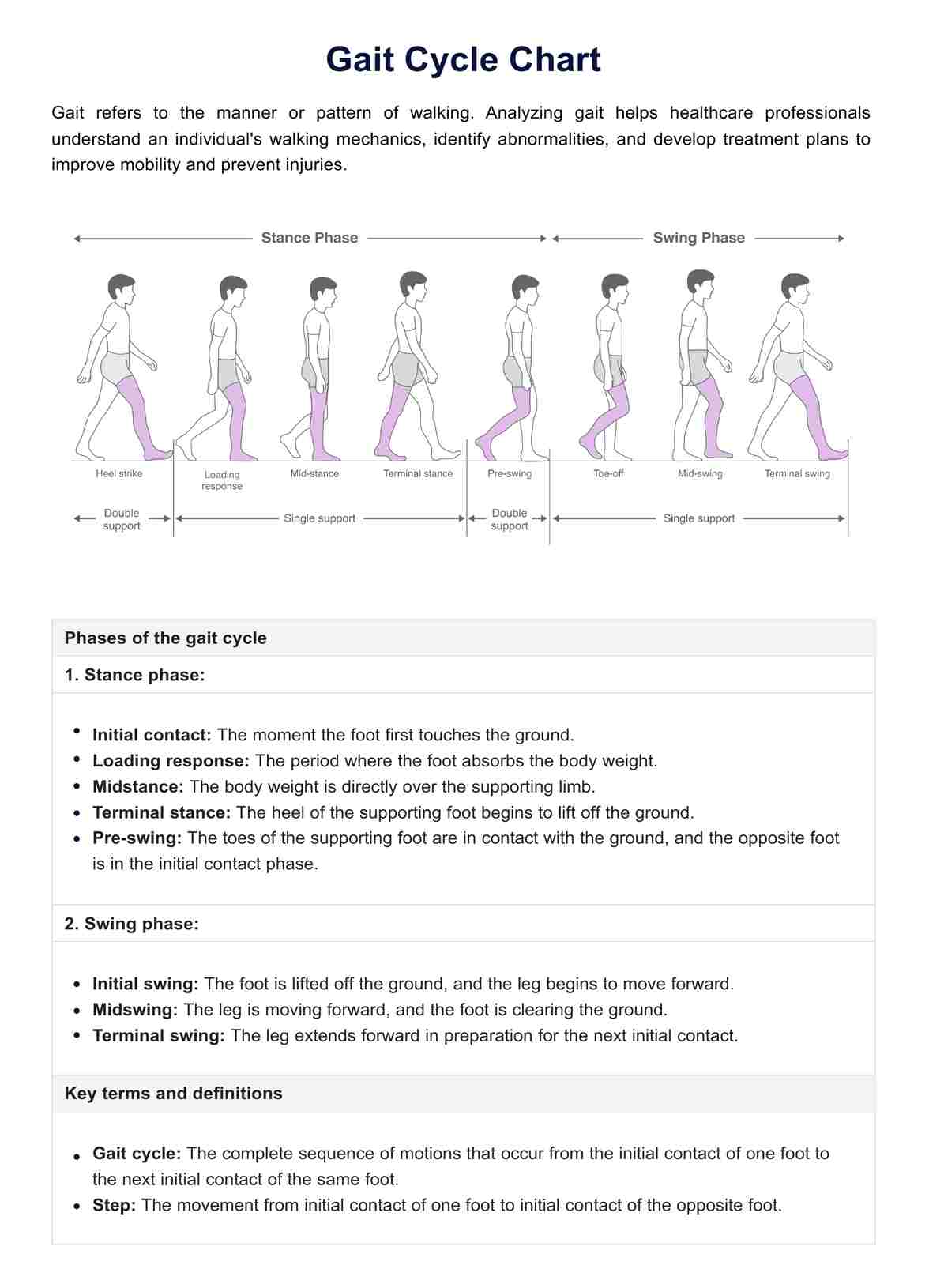The gait cycle is the sequence of movements from when one foot contacts the ground to when the same foot contacts the ground again.

Gait Cycle Chart
Discover the importance of the Gait Cycle Chart, its phases, and how healthcare professionals can use our comprehensive template for effective gait analysis.
Use Template
Gait Cycle Chart Template
Commonly asked questions
A normal gait pattern involves smooth, rhythmic, and symmetrical movements with balanced stride lengths and consistent timing between steps.
The 8 types of gait include hemiplegic, diplegic, neuropathic, myopathic, choreiform, ataxic, parkinsonian, and sensory gait.
EHR and practice management software
Get started for free
*No credit card required
Free
$0/usd
Unlimited clients
Telehealth
1GB of storage
Client portal text
Automated billing and online payments











